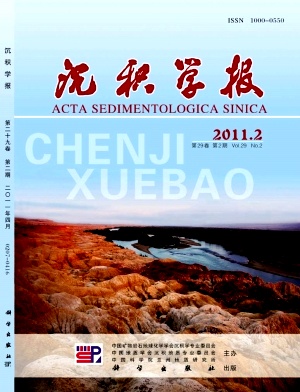Crystal Tuff Zircon LAICPMS UPb Ages from the Lower Jiangbasitao Formation in the East Daheishan Area, Xinjiang and Their Geological Implications
- Received Date: 1900-01-01
- Rev Recd Date: 1900-01-01
- Publish Date: 2011-04-10
-
Key words:
- crystal tuff /
- Jiangbasitao Formation /
- zircon LAICPMS UPb dating /
- Junggar Basin
Abstract: The Daheishan area is located in the south of the Santanghu Basin, north to the BalikunKaerlikeshan, and is adjacent to the Tuha Basin, which is located in the Paleozoic Orogenic Belt of eastern edge of Junggar basin. A suite of thickbedded marine volcanicsedimentary rocks——consist mainly of tuffaceous sandstones and siltstones, tuffs, muddy siltstones, silty mudstones, mudstones, and conglomerates are distributed in the Daheishan region in east Junggar, of which the ages and stratigraphy are highly controversial. More importantly, as the study area is sandwiched between the ZhahebaAermantai and the KelamailiTakezhale ophiolitic melange belts, it is of importance to investigate the stratigraphy. Two crystal tuff horizons (Nos. DHS04N and DHS07N) are sampled from the Jiangbasitao Formation of Lower Carboniferous and are dated using zircon LAICPMS method. The analysis shows that the zircons are of typical magmatic origin with oscillatory zoning. Samples of DHS04N have a uranium content of 63~642 μg/g, thorium of 19~1037 μg/g, and a Th/U value range between 0.29 and 1.89. Whereas those of DHS07N have a uranium content of 40
~476 μg/g, thorium of 25~466 μg/g, and Th/U of 0.48~1.14. The dating results yield two weighted mean 206Pb/238U ages of (339.4±1.9) Ma (MSWD=0.39) and (336.3±2.6) Ma (MSWD=0.58), respectively. These two radiometric ages are well consistent and are interpreted to represent the crystallization age of the zircons from the tuff and also the age of the sedimentation of the tuff sequence, indicating that the tuff sequence should be ascribed to the Visean Stage (ca. 345~328 Ma) of the Early Carboniferous. Newly found fossil evidence—e.g., brachiopoda index fossils Stratifera magna, Gigantoproductus striatosulcatus, and Gigantoproductus edelburgensis—also indicates the Early Carboniferous age of the sequence. Combining the new paleobiological data, we assign these successions to the Early Carboniferous in age. Two zircon samples show concordia ages of 352 ~ 2 999 Ma and CL images of the zircons is characterized by well psephicity, relatively darker hue in luminescence, as well as ambiguously developed zonings, which together suggests a inherit nature of the zircons. In total, the radiometric data document not only a set of Paleozoic ages but also seven important 752 ~ 2 999 Ma Precambrian ages. With respect to the origin of the zircons, we suggest that they were derived from areas between the two ophiolite belts, because the study area was restricted by the paleooceanic basin (Zhaheba Aermantai ophiolite ophiolitic melange belt) and backarc basin (KelamailiTakezhale ophiolite ophiolitic melange belt). This would possibly indicate the existence of Precambrian blocks. Paleozoic strataformed mountains in northeast Junggar are surrounded by two ophiolite ophiolitic melange belts and form a “restricted area”. Our data may further indicate that this “restricted area” was presumably a Paleozoic hyperplasia belt that mixes ophiolite, ophiolitic melange block, island arc magmatic complex, and microlandmass.
| Citation: | FAN Tingting. Crystal Tuff Zircon LAICPMS UPb Ages from the Lower Jiangbasitao Formation in the East Daheishan Area, Xinjiang and Their Geological Implications[J]. Acta Sedimentologica Sinica, 2011, 29(2): 312-320. |






 DownLoad:
DownLoad: